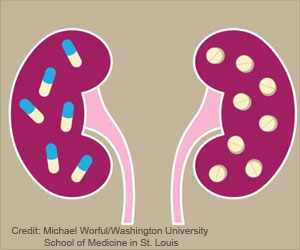- Left lateral decubitus sleeping position is associated with improved gastroesophageal reflux disease symptoms: A systematic review and meta-analysis - (https://pmc.ncbi.nlm.nih.gov/articles/PMC10643078/)
About
Have you ever woken up in the middle of the night with a burning sensation in the chest, a sour taste in the mouth, or the feeling of acid creeping up the throat? It’s
Did You Know?
Tired of waking up with heartburn? Switch to sleeping on your left side! It's a simple, natural way to reduce acid reflux and improve your sleep. #heartburnrelief #bettersleep #medindia
While medications and dietary change are common ways to manage these symptoms, your sleeping position might be a simple and highly effective solution. It is recommended that sleeping on your left side is a natural remedy to alleviate heartburn and improve sleep quality(1✔ ✔Trusted Source
Left lateral decubitus sleeping position is associated with improved gastroesophageal reflux disease symptoms: A systematic review and meta-analysis
Go to source).
Symptoms of Nighttime Acid Reflux
Nighttime acid reflux occurs when stomach acid flows back into the esophagus, typically when lying down. Millions of people experience discomfort and interrupted sleep because of nighttime acid reflux.
Nighttime reflux symptoms are:
- Burning pain in the chest or throat (heartburn).
- Regurgitation (backward flow) of stomach contents into the mouth.
- A bitter or sour taste in the throat.
- Disrupted sleep due to discomfort.
- Chronic coughing or throat irritation, especially if reflux occurs regularly.
If these symptoms occur frequently, it may be a sign of gastroesophageal reflux disease (GERD), a chronic condition that requires attention.
Effect of Sleeping Positions on Acid Reflux: Why Left-Side Sleeping Works Best
The position in which you sleep plays a significant role in how your body handles stomach acid. When lying on your right side or back, the esophagus is positioned below the stomach, making it easier for acid to flow back into the esophagus and cause symptoms.
Sleeping on your left side creates the opposite effect. The stomach is naturally positioned slightly to the left of the body. When you lie on your left side, gravity helps keep stomach contents in place, preventing them from traveling back into the esophagus. The lower esophageal sphincter (LES), a muscle that acts as a valve to keep acid in the stomach, functions more effectively in this position, further reducing the likelihood of reflux.
Left-side sleeping is helpful for people with nighttime acid reflux, pregnant women and people with gastroesophageal reflux disease (GERD).

Benefits of Left-Sided Sleeping
1. Reduces Acid Reflux Episodes
Sleeping on your left side significantly decreases the number of times acid escapes from the stomach into the esophagus. This can help you wake up feeling rested and free of the typical burning sensation.
2. Protects the Esophagus
Prolonged acid exposure can damage the sensitive lining of the esophagus, leading to complications like inflammation or even Barrett's esophagus in chronic cases. Left-side sleeping helps reduce acid exposure and protects the esophagus from damage.
3. Improves Digestion and Comfort
Lying on your left side may also aid digestion. This position allows gravity to help food and stomach acid move more efficiently through your digestive tract.
4. Enhances Sleep Quality
With fewer disruptions from heartburn and reflux, can result in deep, uninterrupted sleep, which is essential for overall health and well-being.
Tips for Adopting Left-Side Sleeping
Adopting the left-side sleeping position might take some adjustment, but these tips can help:
- Even if you shift positions during sleep, starting on your left side can increase the time you spend in this beneficial posture.
- A supportive body pillow can help you stay on your left side throughout the night by providing added comfort and stability.
- Using a wedge pillow or an adjustable bed to raise the upper body by 6-8 inches can further reduce acid reflux, especially when combined with left-side sleeping.
- Eating large meals or acidic foods close to bedtime can worsen reflux. Aim to finish eating at least 2-3 hours before lying down.
- Invest in a good-quality mattress and pillow to make the left-side position more comfortable.
While sleeping on your left side can significantly reduce symptoms, it’s most effective when combined with other lifestyle modifications, such as:
- Maintaining a healthy weight, as excess weight increases abdominal pressure and reflux risk.
- Avoiding trigger foods like spicy, fried, or acidic items that worsen heartburn.
- Limiting alcohol and caffeine intake, particularly in the evening.
Switching to your left side while sleeping is a simple, cost-free change that can have a significant effect on your health and quality of life. Reducing nighttime reflux and its associated discomfort can improve both sleep and overall well-being.
So tonight, consider sleeping on your left side as it can be the key to waking up feeling refreshed and heartburn-free.









